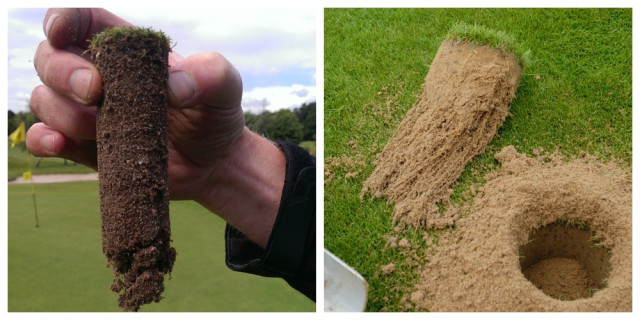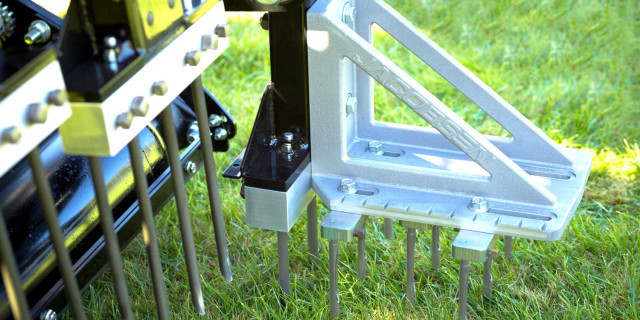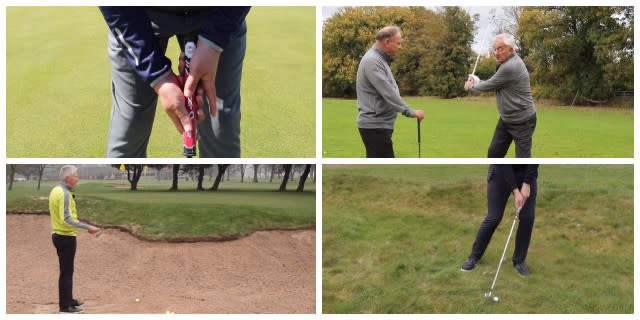What is thatch?
Thatch levels have an important role to play in the quality of a playing surface, despite not being entirely understood by the majority of golfers.
When too much thatch is present, the turfgrass environment changes and the way the golf ball interacts with the surface will change. You’ll find balls don’t roll evenly, even across the same green.
Thatch is a layer of dead vegetation that sits between the green vegetation you see and the soil. It’s caused when the grass is growing and being cut faster than it can be decomposed.

A soil sample shows the depths of turf rooting
Poa annua, the most common grass species found on UK parkland courses, and hard-wearing fescues, such as you find at links courses around the coast, are especially notorious for causing excessive thatch.
Like a little layer of fat on your body, a small layer of thatch has the advantage of providing a level of protection and resiliency against traffic stress and ball impact.
But, like fat, too much of a good thing can quickly cause serious problems.
Excessive thatch can cause increased disease and insect problems, localised dry spots, soft and spongy surfaces, and decreased heat, cold and drought tolerances.
Thatch can be kept at bay with good maintenance regimes, but invariably mechanical methods will be brought into play. There are many terms that are used in the industry; scarification, verticutting and grooming have all been with us for many years.

Forms of aeration such as hollow coring could also be considered but they do all have one thing in common: they disrupt the playing surface to a greater or lesser extent.
With all things in turf management, prevention is better than cure, and your greens team will be working hard to prevent a thick layer of thatch developing in the first place.
To watch the BIGGA greenkeeping series videos visit: www.golfshake.com/improve/tag/BIGGA/
BIGGA represents the Nation's greenkeepers and works hard through education and training to raise standards in golf course management throughout the greenkeeping profession. To find out more about the work BIGGA do visit: www.bigga.org.uk

Related Content: BIGGA
Related Video
Comments
British and International Golf Greenkeepers Association
BIGGA is dedicated to the continuing professional development of its 5,700 members, BIGGA works hard through education and training to raise standards in golf course management throughout the greenkeeping profession.
More Features




















